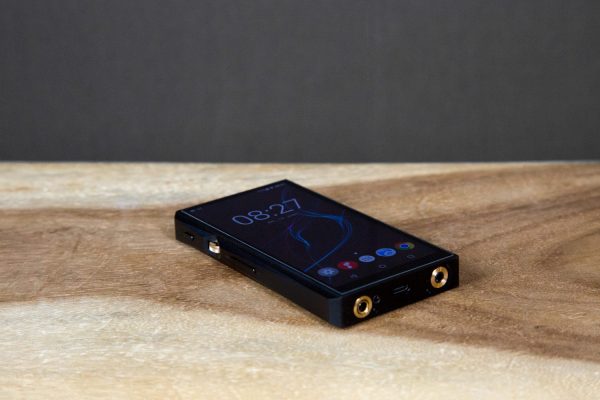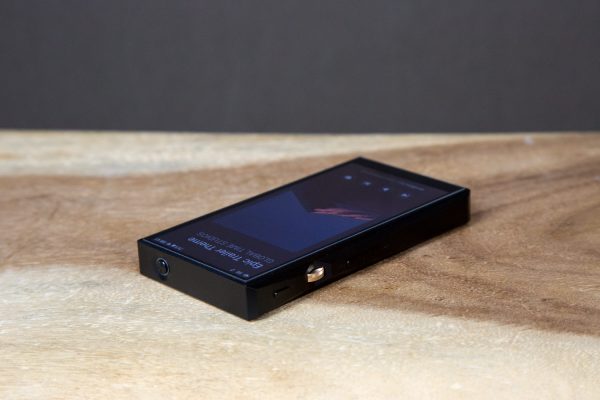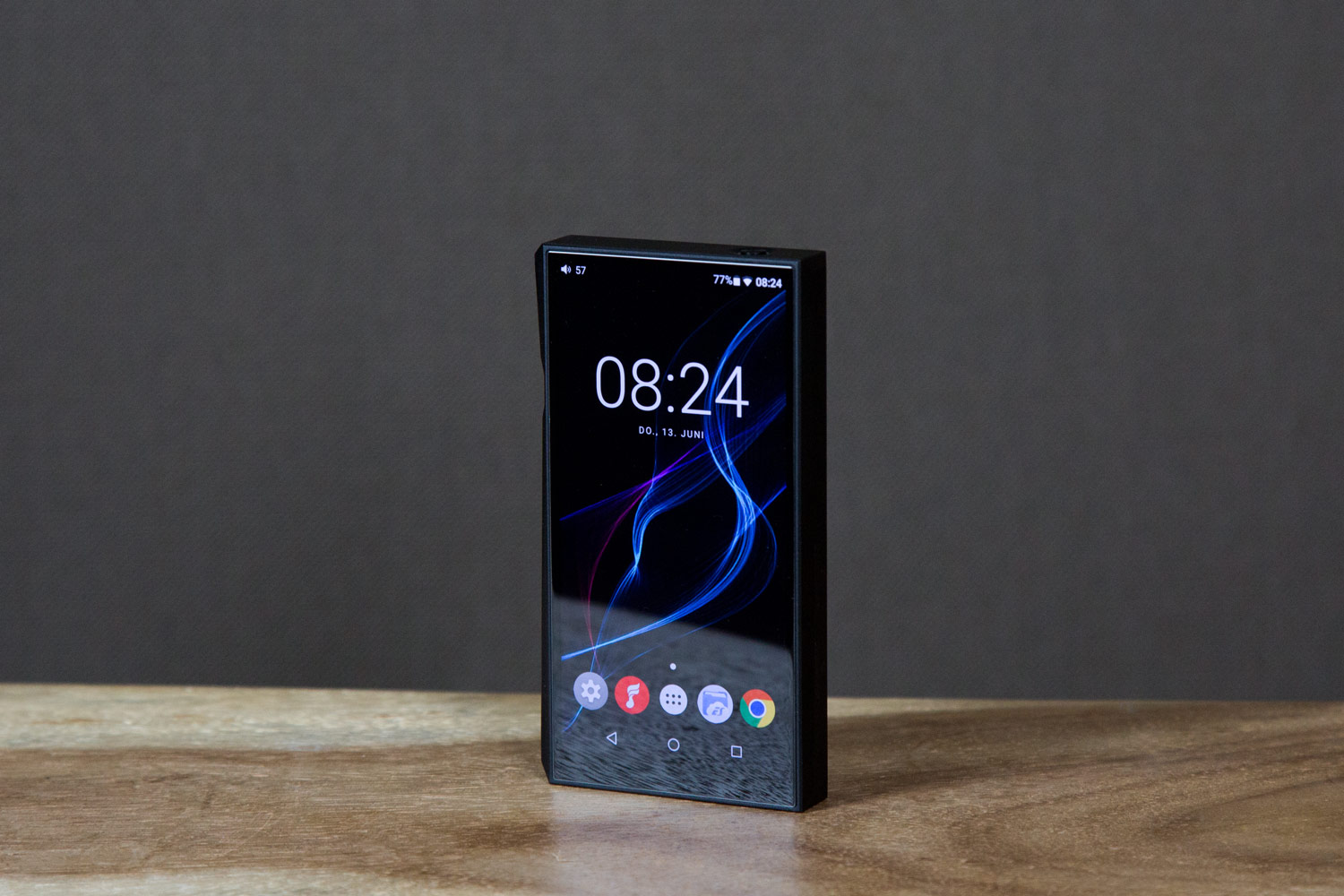Design
As usual, we first take a look at the design of the new FIIO player. The M11 comes with a plain black case, measures 70 x 130 x 15.5 mm and weighs 210g. The volume control on the left and the headphone jacks on the underside set small colour accents. The front and back are each wholly covered with a reinforced glass surface; in front, there is, of course, the obligatory touch display (5.15 inches, 18:9 format, 720p), and in the back, a finely grained carbon fiber structure shimmers through the glass depending on the incidence of light. On the left side, you will find the volume control, the play-/pause button, and the skip button. On the right side, you can access two MicroSD slots (up to 2 TB) with the included mini tool. Between the three jack sockets on the underside (2x symmetrical: 2.5 mm, 4.4 mm and 1x asymmetrical: 3.5 mm) there is the socket for the charging cable (USB-C), on the top side the M11 can be switched on and off. The feel of the player has succeeded, weight and material convey value without appearing clumsy, the buttons work cleanly and the volume control, whose grid acknowledges every change with tactile feedback and an unobtrusive click, sits stably in the frame. The scope of delivery also includes a protective cover that protects the M11 from possible impacts.
Hardware
Now that we have orientated ourselves fundamentally, it’s time to get down to business – and there is actually a lot to be done here. So let’s start with the fact that the FIIO M11 is equipped with a powerful 6-core processor and 3GB (as well as 32GB internal memory) and thus provides enough power to allow smooth navigation through the Android 7 user interface. The converter architecture is completely symmetrical, as it should be for an audiophile player, so two current AKM AK4493 D/A converters are used. In addition, all other components – op-amps, resistors, capacitors, etc. – were carefully selected for the development of the M11, so that the M11 is able to provide a neutral and interference-free high-end signal for the connected headphones. In this respect, the new FIIO is not very choosy, by the way, and drives even demanding listeners without any problems. Of course, both a WLAN and a Bluetooth module are integrated, so that the player can be easily paired with other devices. What exactly is possible here, we’ll discuss in the next section when we get to know the software.

Software
As already mentioned, the FIIO M11 comes with a modified version of Google Android 7 (Nougat), but without a purchased Google license; the official Google Play Store is therefore not available. Note that this doesn’t mean that apps can’t be installed manually, but it could cause problems if they require certain Google Play Store services. Here, of course, we are already far away from the actual core competencies of the device. When it comes to playing music in the first place, the M11 is well-equipped ex-works.
FIIO has pre-installed its own FIIO Music App, which has some special features in addition to the obligatory functions (play, pause, favorites lists, navigation through the music library, multiband equalizer, …). For example, the M11 can be connected to a smartphone via Bluetooth using the so-called FIIO Link function and can then be remotely controlled from there using the FIIO Link App. In addition, an entire arsenal of corresponding protocols is available for transmitting (high-resolution) music via Bluetooth: SBC, aptX, aptX HD, LDAC (Sony), LHDC (Huawei). A WLAN connection can also be used not only to download apps or updates but also for musical purposes. The M11 supports Apple AirPlay and the universal DLNA protocol, which can be used to access computers of NAS systems. On the other hand, the relevant streaming providers such as Spotify and Co. can, of course, be tapped. Finally, it is also possible to copy music files from the computer or smartphone to the player in case there is no cable at hand.

This is also indispensable if you set the M11 to USB DAC mode, i.e. use it as a D/A converter on the computer or output music data (including DSD) to another converter via USB or S/PDIF (coaxial adapter included). Maximum supported are PCM files with 384 kHz / 32 Bit as well as native DSD256 files. Another word on the subject of DSD: The FIIO M11 has a so-called “All-to-DSD” function that extrapolates all audio data (also from external apps) to DSD64.
Final Thoughts
That brings us to the end of our overview. The FIIO M11 leaves a promising first impression. We will use the coming days to explore the player even further. Of course, you can also get your own impression of our headphone studio at any time.





Do the M11 can stream to DTS Play-Fi home audio ?
Hi, should be no problem!